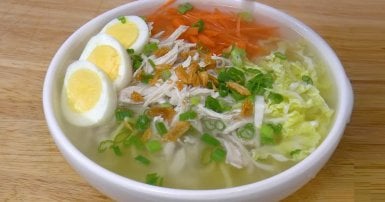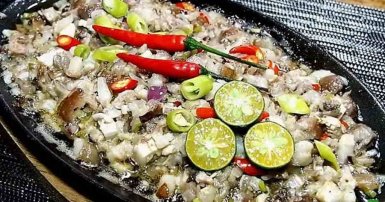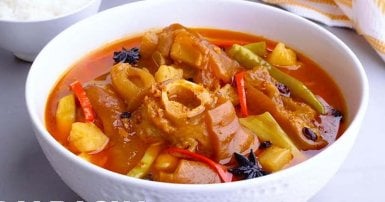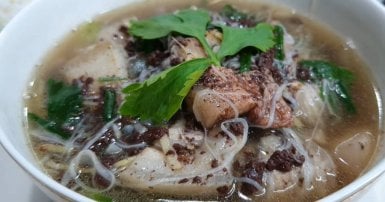In the Philippines, soups are a cornerstone of Filipino culinary traditions, reflecting a diverse and flavorful array. These comforting broths often feature a harmonious blend of local ingredients, showcasing the richness of Filipino flavors. Whether it's a sour-based concoction, a hearty blend of meats and vegetables, or a comforting noodle soup, Filipino soups embody the warmth and communal essence deeply ingrained in the country's dining culture. Each spoonful tells a story of culinary heritage, offering a delightful walk through the diverse and savory landscape of Philippine soups.
Sinigang

Sinigang, a widely embraced soup dish in the Philippines, is renowned for its rich and tangy flavors, making it a cherished classic in Filipino cuisine. This comfort food boasts a distinctive sour taste derived from its tamarind-infused base. Complemented by a medley of ingredients including meat options such as pork, beef, or shrimp, as well as a variety of vegetables like kangkong, radish, eggplant, and okra, Sinigang achieves a harmonious balance of flavors. The sinigang broth undergoes a meticulous cooking process involving the boiling of meat with onions, tomatoes, and tamarind until it reaches a tender and flavorful consistency. The addition of vibrant vegetables follows, cooked until they achieve a delightful softness while retaining their natural colors. The end result is a hearty and comforting soup, ideal for any occasion, particularly on rainy days. Typically served with steamed rice, Sinigang is best enjoyed in the company of family or friends.
Hot and Sour Soup
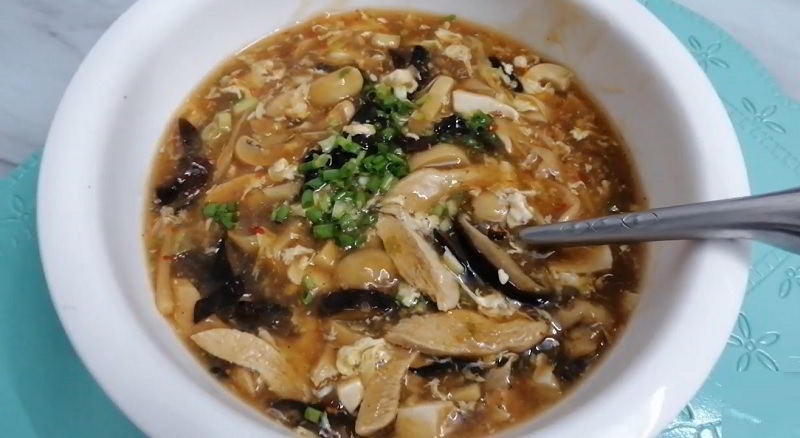
Hot and Sour Soup, a Chinese-inspired Filipino dish, combines the culinary influences of both cultures in a harmonious blend of flavors. Thinly sliced pork, tender shrimp, wood ear mushrooms, and tofu dance in a robust broth flavored with garlic, ginger, and onions. The soup gains depth from a fusion of soy sauce, fish sauce, and vinegar, while a spicy kick emerges from chili paste. Bamboo shoots contribute a distinctive texture, encapsulating the dish's cross-cultural appeal. The addition of beaten eggs creates silky ribbons, enhancing the overall richness. A garnish of green onions adds freshness to this delightful synthesis of Chinese and Filipino culinary traditions, resulting in a Hot and Sour Soup that embodies the best of both worlds.
Soup Number Five
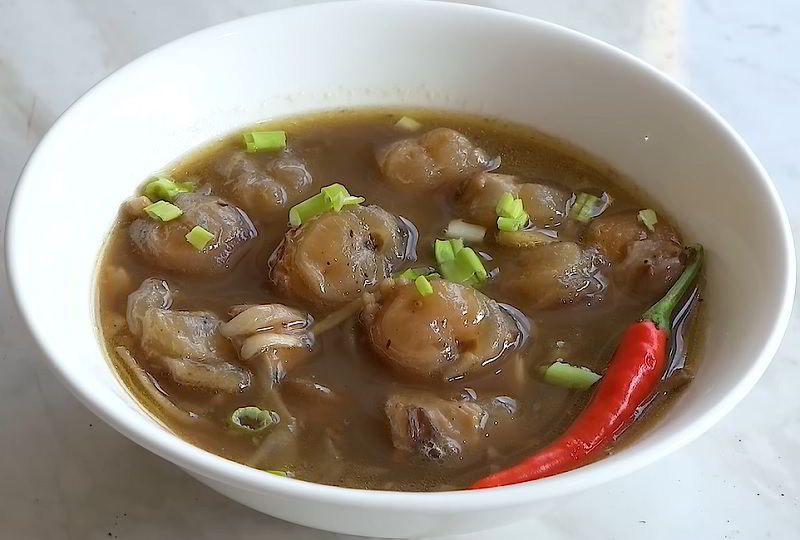
Soup Number Five, also known as "Sopa de Bola" or simply "Sopas," stands out as a distinctive and popular Filipino soup deeply embedded in the country's culinary heritage. This robust soup is crafted from an assortment of animal innards, notably bull or goat testicles, along with tripe, kidneys, heart, and liver. While the inclusion of unconventional ingredients may raise eyebrows, Soup Number Five is adored by many Filipinos for its rich and flavorful taste. The soup's preparation involves a meticulous process of cleaning and boiling the innards to ensure the elimination of any undesired flavors or odors. The softened innards are then melded with a savory broth derived from beef bones, onions, garlic, and an array of spices.
Batchoy
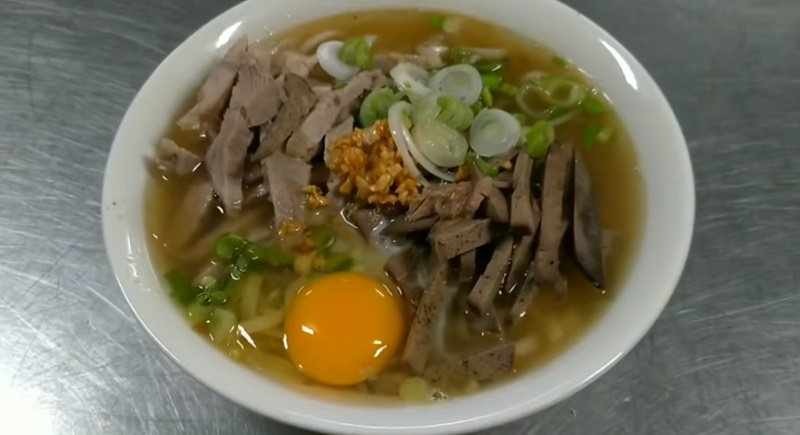
Batchoy, a beloved Filipino soup originating from the province of Iloilo, is a hearty and flavorful delight embraced by many in the Philippines. This soup is renowned for its rich and savory broth, substantial noodles, and an array of enticing ingredients. The foundation of batchoy lies in a meticulously simmered pork or beef broth, infused over hours to attain a profound and robust flavor. Seasoned with soy sauce, fish sauce, and assorted spices, the soup achieves an enhanced taste profile. Traditionally crafted with miki noodles—thick and chewy—batchoy can also feature other noodle varieties. A key component of this soup is pork or beef offal, including liver, intestines, and kidneys, imparting a distinctive texture and flavor. Additional ingredients comprise sliced pork or beef, garlic, onions, and vegetables like cabbage and spring onions. Topping off batchoy are crispy fried garlic, spring onions, and crushed chicharon (pork cracklings), contributing layers of texture and flavor. In essence, batchoy stands as a comforting and gratifying soup that beautifully showcases the diverse flavors and ingredients of the Philippines.
Tinola
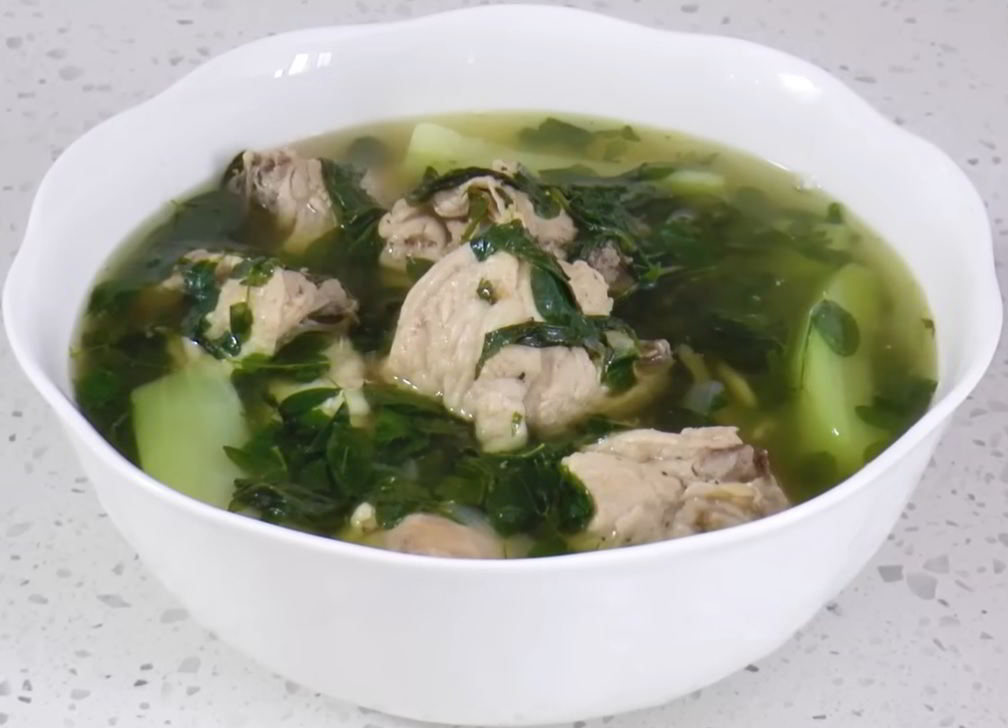
Tinola is a traditional Filipino dish that is beloved for its comforting and nourishing qualities. This soup is typically made with chicken, ginger, garlic, and green papaya or chayote, and is flavored with fish sauce or patis. The combination of these ingredients creates a flavorful broth that is both savory and tangy. The chicken used in Tinola is often cut into small pieces, allowing it to cook quickly and absorb the flavors of the other ingredients. Ginger and garlic add a fragrant and slightly spicy kick to the soup, while the green papaya or chayote provides a subtle sweetness and a delightful crunch. The use of fish sauce enhances the umami flavors of the dish, adding depth and complexity to each spoonful. Tinola is not only delicious, but it is also highly nutritious. The chicken provides protein, while the ginger and garlic offer numerous health benefits, including anti-inflammatory properties and immune-boosting qualities. The addition of green papaya or chayote provides dietary fiber and essential vitamins. Whether enjoyed on a chilly evening or as a comforting dish during times of illness, Tinola is a Filipino soup that warms the heart and nourishes the body. Its simple yet flavorful ingredients make it a staple in Filipino households, embodying the essence of Filipino comfort food.
Sinabawang Gulay
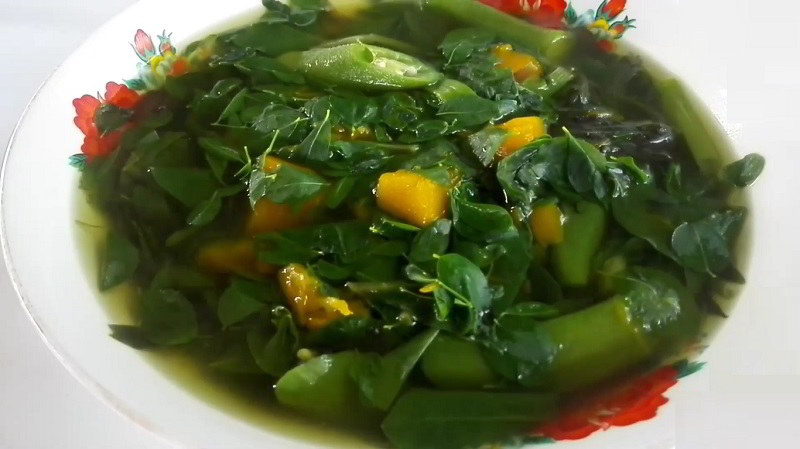
Sinabawang gulay, commonly referred to as vegetable soup, is a well-loved dish in the Philippines. This uncomplicated yet flavorful soup is created by simmering a diverse selection of vegetables in a savory broth. The vegetable choices may vary based on personal taste and availability, with typical ingredients including cabbage, carrots, green beans, and squash. To heighten the taste, onions, garlic, and fish sauce are often introduced to the broth. Some renditions might incorporate shrimp or meat, such as pork or chicken, for an added protein boost. The soup is gently simmered until the vegetables reach a tender state while retaining their vibrant colors and crispiness. Sinabawang gulay proves to be a versatile dish, serving as a light standalone meal or a complementary side dish alongside grilled meat or fish. Often accompanied by a serving of steamed rice, it adds a substantial element to the dining experience. This comforting and nutritious soup not only delights the taste buds but also provides an excellent way to include a variety of vegetables in one's diet. Whether enjoyed during chilly weather or as a refreshing option on hot summer days, sinabawang gulay remains a cherished Filipino dish that seamlessly blends healthfulness with satisfaction.
Mami Soup
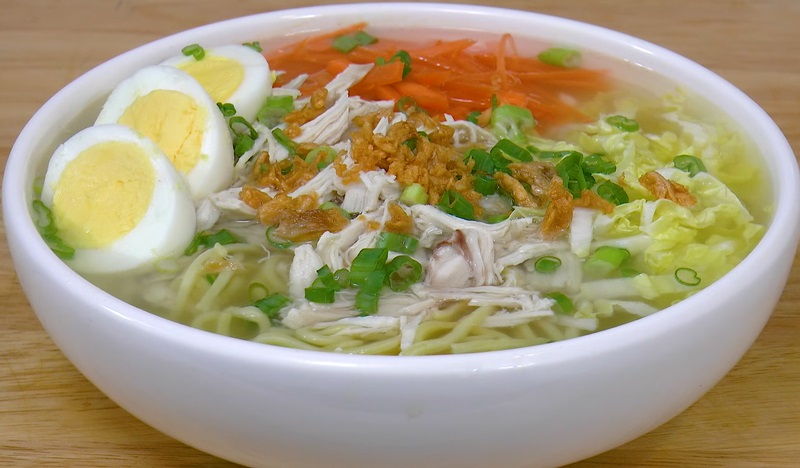
Mami soup is a popular Filipino dish that is loved for its comforting and flavorful qualities. It is a noodle soup that typically consists of egg noodles, meat (usually chicken or beef), and a flavorful broth. The dish is believed to have originated from Chinese cuisine and has been adapted and embraced by Filipinos over the years. The noodles used in mami soup are thin and slightly chewy, adding a delightful texture to the dish. The meat, whether it is chicken or beef, is tender and thinly sliced, making it easy to enjoy with every spoonful. The broth is usually rich and savory, often seasoned with soy sauce and garlic, giving the soup a distinct Filipino taste. Mami soup is often garnished with chopped green onions, enhancing its flavors and presentation. Some variations of mami soup may include additional ingredients like vegetables, tofu, or meatballs. This comforting dish is commonly enjoyed as a hearty meal, especially during rainy days or when seeking comfort food. Whether enjoyed in a local eatery or homemade, mami soup is a beloved Filipino dish that brings warmth and satisfaction with every spoonful.
Sopas
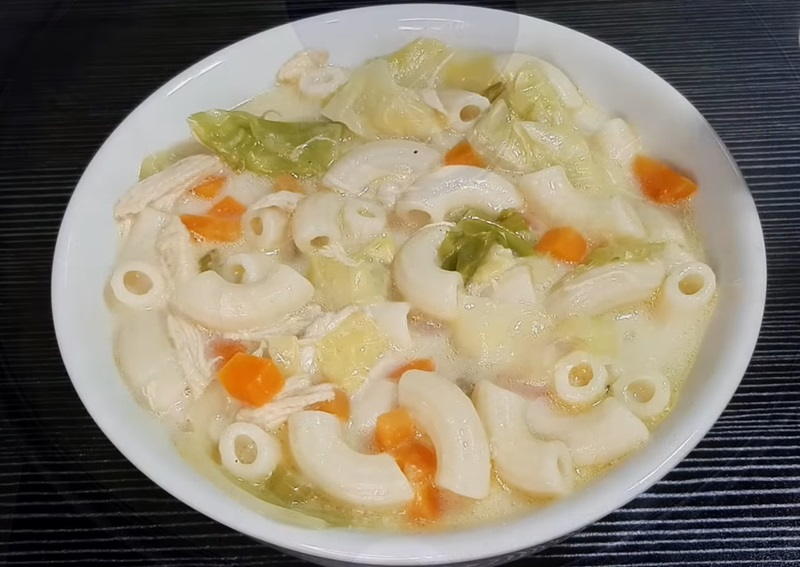
Sopas is a popular Filipino soup dish that is beloved for its comforting and creamy texture. This dish has Spanish influences and is often served as a main course or as a hearty snack. Sopas is typically made with chicken, macaroni pasta, and a variety of vegetables such as carrots, cabbage, and celery. The chicken is first boiled to create a flavorful broth, and then shredded and added back into the soup along with the cooked macaroni and vegetables. What sets Sopas apart is the addition of evaporated milk, which gives the soup its rich and creamy consistency. This ingredient adds a touch of sweetness and enhances the overall flavor of the dish. Sopas is often seasoned with garlic, onions, and fish sauce, which provide a savory and aromatic taste. Sopas is commonly enjoyed during cold weather or when someone is feeling under the weather, as it is considered a comfort food in the Philippines. It is often served with toasted garlic bread or pandesal, a type of Filipino bread roll. Sopas is a dish that brings warmth and comfort to many Filipino households, making it a beloved and timeless soup in Philippine cuisine.
Odong
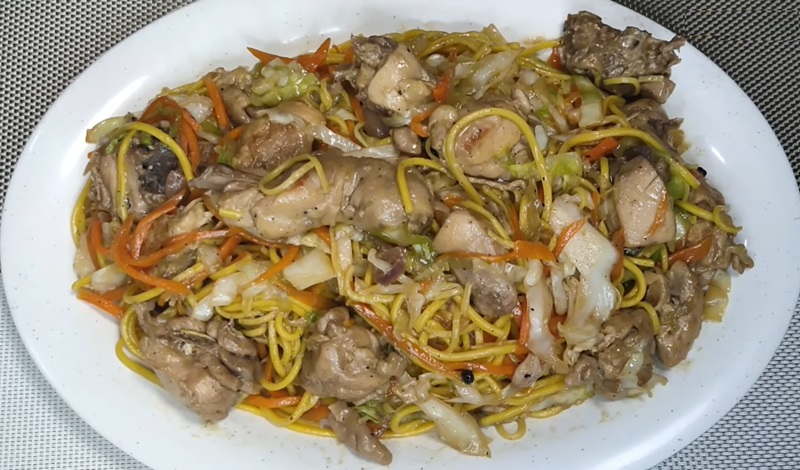
Odong, also known as pancit odong, is a Filipino noodle soup featuring chayote, odong noodles, bottle gourd (upo), ginger, canned smoked sardines (tinapa) in tomato sauce, garlic, loofah (patola), red onions, and an assortment of vegetables. This flavorful dish is seasoned with black pepper and garnished with calamansi, scallions, toasted garlic, or labuyo chilis. Typically, odong is prepared as a soup, creating a hearty and comforting meal. However, it also offers versatility as it can be cooked with minimal water, transforming into odong guisado. The combination of unique noodles, smoked sardines, and a medley of vegetables makes odong a distinctive and delicious addition to Filipino culinary traditions, offering both a soupy delight and a drier guisado variant.
Binignit

Binignit stands as a cherished Filipino dessert soup, often relished during special occasions and religious gatherings. This sweet and creamy delicacy presents a delightful fusion of flavors and textures, featuring key ingredients like sweet potatoes, bananas, taro roots, jackfruit, and tapioca pearls. These components are gently simmered in coconut milk, creating a luscious and creamy foundation for the soup. Binignit's appeal extends with the addition of glutinous rice balls, sago pearls, and langka (jackfruit), contributing a chewy dimension to the dish. Sweetness is derived from sugar, and at times, condensed milk is added, enhancing its delectable taste. Fragrant pandan leaves infuse the soup with a refreshing aroma, elevating the overall sensory experience. Binignit serves as an exquisite dessert or afternoon treat. Its vibrant colors and diverse array of ingredients not only make it visually appealing but also contribute to its overall allure. Beyond satisfying the taste buds, this Filipino delicacy offers a comforting and gratifying experience for those fortunate enough to indulge in its flavors.
Nilaga
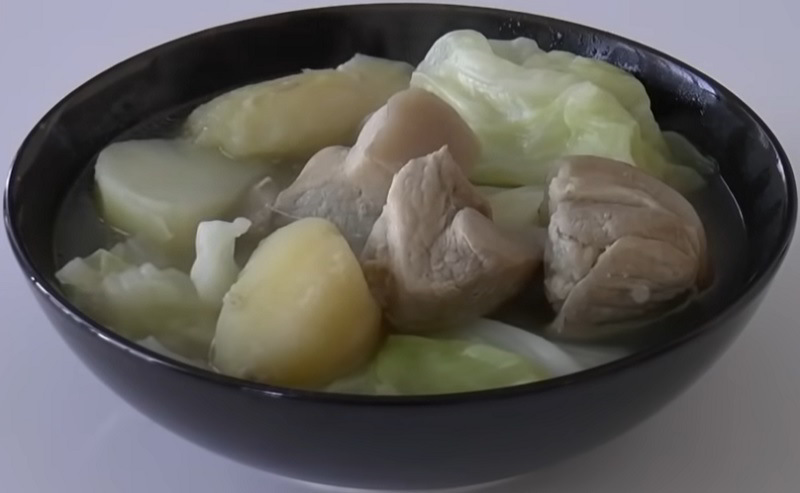
Nilaga is a popular Filipino soup dish that is known for its comforting and hearty flavors. This traditional dish is usually made with beef, but it can also be prepared with other types of meat such as pork or chicken. The main ingredients of Nilaga are meat, vegetables, and broth. The meat is typically boiled until tender, resulting in a flavorful and juicy broth. Common vegetables used in Nilaga include cabbage, potatoes, carrots, and green beans. These vegetables add texture and nutrients to the soup. To enhance the taste, garlic and onions are usually sautéed before adding the meat and vegetables. Nilaga is often enjoyed with steamed white rice and a side of fish sauce or patis for added savory flavors. This soup is not only delicious but also nourishing, making it a popular choice for a comforting meal, especially during colder months.
Ginataan

"Ginataan" refers to a Filipino term for dishes that are cooked with coconut milk (gata). This culinary technique is commonly used to create a variety of sweet and savory dishes in Filipino cuisine. Ginataan can include a wide range of ingredients such as vegetables, fruits, meat, or seafood, cooked in a rich and creamy coconut milk base. One popular sweet dish made using ginataan is "Ginataang mais," a dessert that combines a mix of various ingredients like sweet corn, glutinous rice, and kernels in coconut milk. On the savory side, "ginataang sigarilyas" features winged beans, shrimp paste, garlic, onions, and of course, coconut milk. Ginataan reflects the Philippines' love for coconut-based dishes, showcasing the rich and versatile use of coconut milk in Filipino cooking, providing both flavor and a creamy texture to various dishes.
Dinengdeng
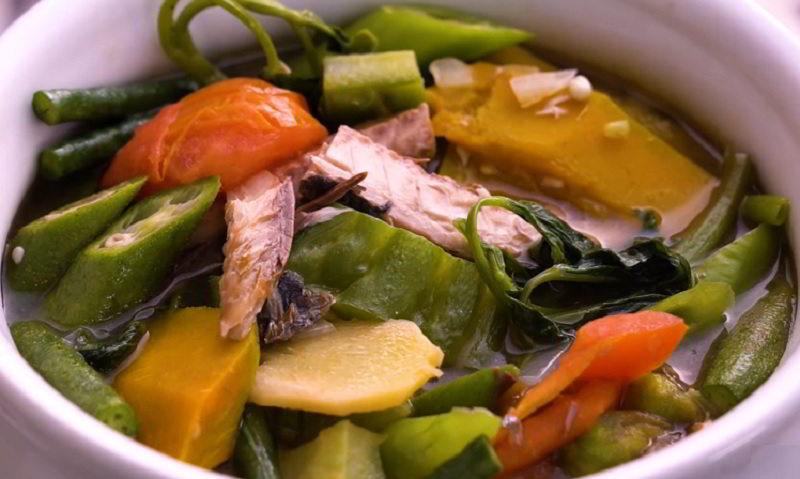
Dinengdeng is a traditional Filipino soup celebrated for its simplicity and flavorful combination of fresh vegetables and fish. This light and invigorating dish is particularly well-suited for warm summer days. The key components of dinengdeng include an assortment of vegetables like string beans, eggplant, bitter melon, squash, and okra. These vegetables are skillfully boiled or steamed until tender, retaining their vibrant colors. The soup's distinctive taste is derived from the addition of bagoong, a fermented fish or shrimp paste, contributing to its rich and savory flavor. Dinengdeng is often paired with grilled or fried fish, offering a protein element to the dish. Whether enjoyed as a main course or as a complementary side dish to other Filipino favorites, dinengdeng's appeal lies in its use of fresh vegetables and minimalistic approach, making it a healthy and nutritious choice for those seeking a light and satisfying meal.
Kadyos, Baboy, Kag Langka
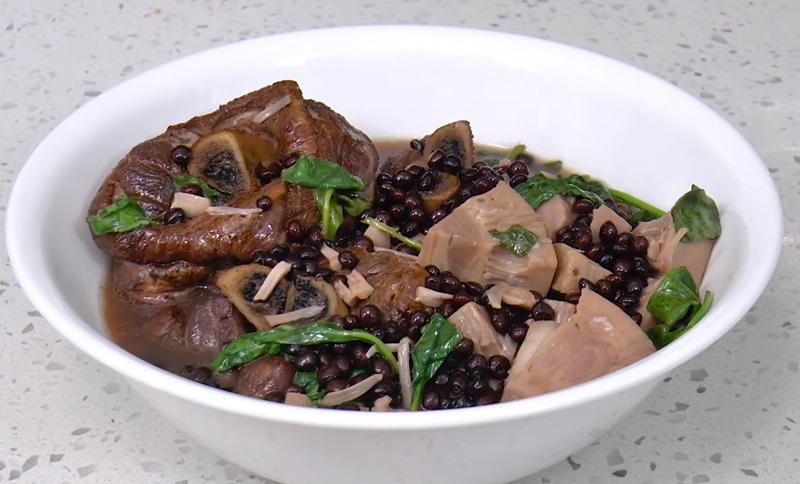
Kadyos, baboy, kag langka is a traditional Filipino soup originating from the Western Visayas region in the Philippines, renowned for its hearty and flavorful composition. This robust dish spotlights three key ingredients: kadyos (pigeon peas), baboy (pork), and langka (jackfruit). The preparation involves boiling the kadyos and langka until tender. Simultaneously, pork is sautéed with garlic, onions, and tomatoes, intensifying its flavors. Once the pigeon peas and jackfruit reach the desired tenderness, they join the sautéed pork in the pot, creating a broth that is both rich and savory. The amalgamation of tender pigeon peas, succulent pork, and sweet jackfruit yields a distinctive interplay of flavors and textures in this soup. Typically seasoned with fish sauce, salt, and pepper, kadyos, baboy, kag langka is commonly enjoyed with steamed rice, emerging as a favored comfort food in the Western Visayas region. Its hearty and fulfilling qualities make it an ideal choice for family gatherings or to warm up during cold rainy days.
Tiyula Itum

Tiyula Itum is a distinctive and flavorful Filipino soup. Recognized by its deep, almost black color, this unique hue is achieved through the incorporation of burnt coconut meat and spices. The primary ingredient in Tiyula Itum is beef, particularly shank or ribs, simmered to tenderness over hours. The broth is infused with an array of spices, including ginger, garlic, turmeric, and lemongrass, resulting in a rich and aromatic taste. Setting Tiyula Itum apart from other Filipino soups is the addition of burnt coconut meat, contributing a smoky and subtly charred flavor. Typically served with rice and adorned with fresh herbs like coriander or spring onions, Tiyula Itum is a hearty and gratifying soup, ideal for cold or rainy days. Despite its dark appearance, the flavors of Tiyula Itum are robust and complex, earning it a cherished status among both locals and visitors.
Ginataang Kalabasa

Ginataang kalabasa is a renowned Filipino soup celebrated for its luscious and creamy taste. The star ingredient in this dish is calabaza, a locally abundant squash in the Philippines, cut into cubes and simmered in coconut milk, lending the soup its creamy texture and distinct flavor. To elevate the taste, the dish incorporates garlic, onions, ginger, and shrimp paste, contributing depth and a savory undertone. Additional vegetables like string beans and spinach are often included, providing a harmonious balance of textures and flavors. Whether relished during cooler months or as a simple and satisfying meal any time of the year, this soup holds a special place in Filipino cuisine. The combination of creamy coconut milk, tender squash, and aromatic spices makes it a perennial favorite among Filipinos, embodying the rich and diverse flavors of the region.
Pancit Molo
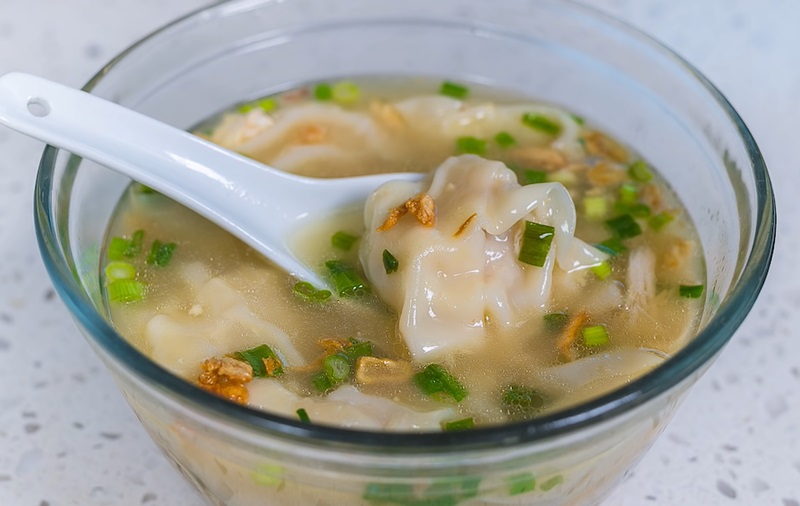
Pancit Molo, originating from the province of Iloilo, is a cherished soup in the Philippines, often gracing special occasions and family gatherings. This comforting and flavorful dish revolves around a rich and savory broth, typically crafted from chicken or pork stock. The heart of the soup lies in small dumplings made from a blend of ground pork, shrimp, minced onions, and garlic. These dumplings, encased in thin wonton wrappers, are cooked until tender. Garnished with crispy garlic bits and green onions, Pancit Molo gains a delightful crunch and freshness. Some variations may include shredded chicken, pork liver, and vegetables like cabbage and carrots. Best enjoyed steaming hot, this soup harmonizes the savory broth, delicate dumplings, and aromatic garnishes for a comforting and satisfying experience. Whether served as an appetizer or a main course, Pancit Molo stands as a beloved Filipino soup, uniting people and warming hearts with its enticing flavors.
Sopa de Fideo
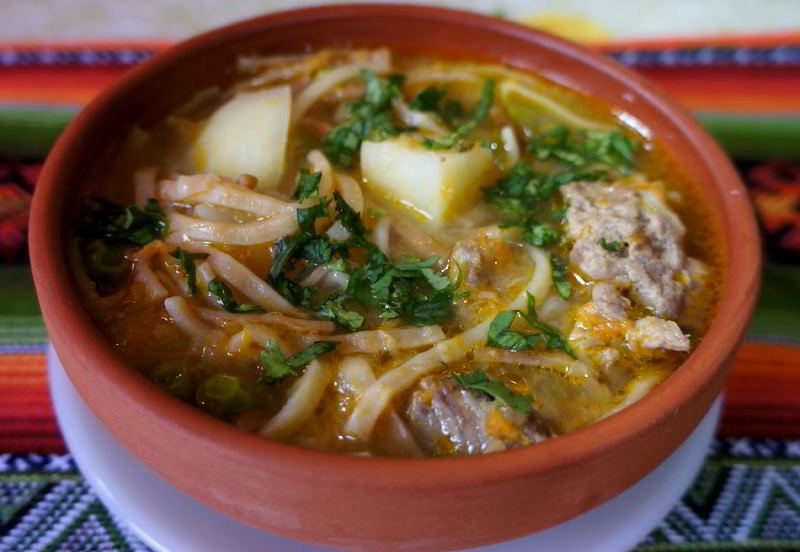
Sopa de fideo, cherished in the Philippines for its straightforward yet comforting appeal, holds a significant place during special events, family get-togethers, and chilly weather. The heartwarming soup is crafted using glass noodles (sotanghon) immersed in a flavorful broth of milk, corn kernels, chicken stock, garlic, tomato sauce, beans (mung beans or garbanzos), and onions. To enhance its richness, Sopa de fideo incorporates meat elements such as chicken liver, ham, chicken gizzards, and ground pork (giniling). This beloved dish encapsulates the essence of Filipino culinary traditions, offering a delightful blend of textures and flavors that make it a favorite for various occasions, showcasing the Philippines' penchant for hearty and satisfying soups.
Gising-gising

Gising-gising, a renowned Filipino dish, is celebrated for its bold and creamy fusion of flavors. Typically featuring green beans or winged beans, the long and slender beans prevalent in the Philippines, this soup combines them with coconut milk, ground pork or beef, garlic, onions, and green chili peppers. The name "gising-gising," translating to "wake up, wake up" in English, perfectly captures the dish's fiery kick that jolts the taste buds to attention. The distinctive flavor stems from the spiciness of green chili peppers, while the coconut milk contributes a luscious and indulgent texture. Versatility defines gising-gising, as it can be served as a main course or a side dish, often accompanied by steamed rice or enjoyed on its own. Beyond its delicious taste, this dish is a valuable source of protein and fiber from the beans and meat. In essence, gising-gising embodies the vibrant and comforting flavors of Filipino cuisine, making it a must-try for those seeking a delightful and spicy culinary experience or looking to delve into the richness of Filipino culinary traditions.
Binakol
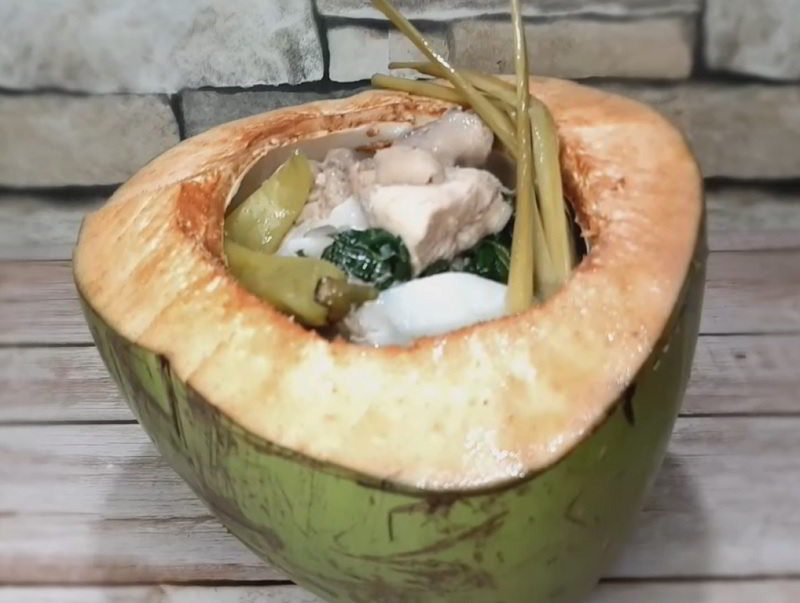
Binakol, alternatively spelled binakoe, stands out as a Filipino chicken soup featuring chicken simmered in coconut water alongside ginger, onion, grated coconut, leafy vegetables, patis (fish sauce), garlic, green papaya (or chayote), and lemongrass. This flavorful dish may also carry a hint of spice through the inclusion of chilis. Binakol showcases versatility, accommodating various meats or seafood in its preparation. Traditionally, it was cooked within bamboo tubes or directly on halved coconut shells, adding a distinctive touch to its cultural roots. This harmonious blend of chicken, coconut, and an array of aromatic ingredients creates a soup that is not only delicious but also reflective of the rich culinary diversity found in Filipino cuisine.
Ginataang Langka
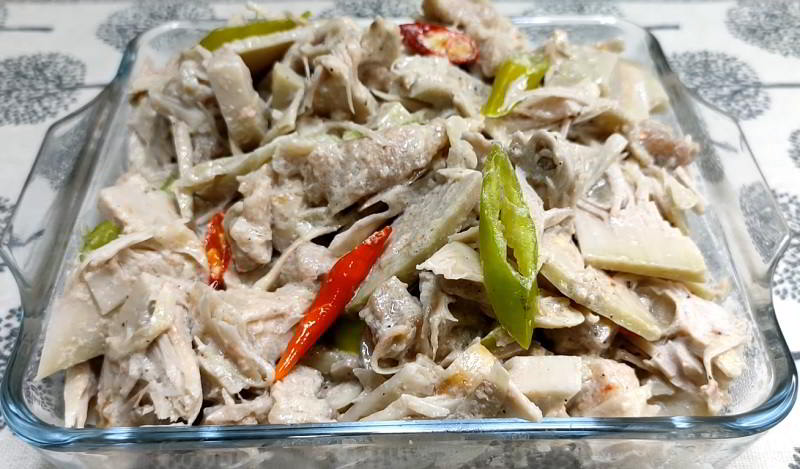
Ginataang langka, also recognized as jackfruit stewed in coconut milk, holds a prominent place in Filipino cuisine. This traditional dish involves simmering unripe jackfruit in a velvety coconut milk broth, often complemented by various vegetables and occasionally meat or seafood. The star of the show is the langka, or jackfruit, a tropical fruit indigenous to Southeast Asia. With its mild flavor and meaty texture, unripe jackfruit seamlessly integrates into the creamy coconut milk base. To prepare ginataang langka, the jackfruit undergoes boiling until tender, then joins forces with coconut milk, garlic, onions, and aromatic spices. Additional vegetables such as string beans, eggplant, and leafy greens contribute both flavor and texture. The outcome is a lush and flavorful soup that marries the richness of coconut milk with the inherent sweetness of jackfruit.
Ginataang Manok
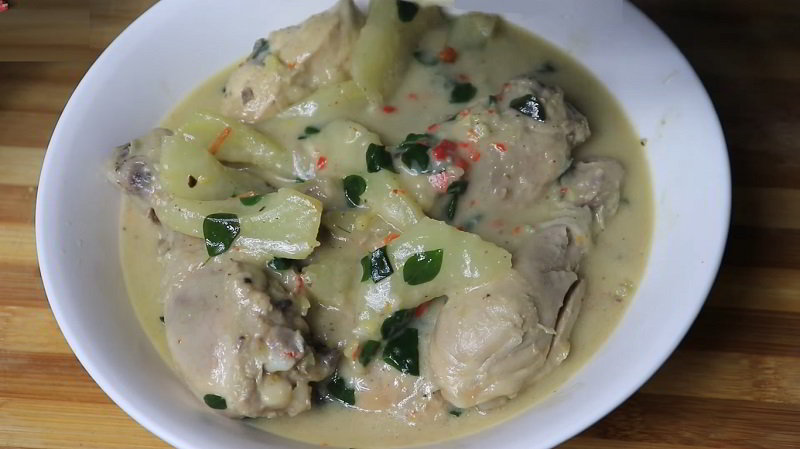
Ginataang Manok stands as a beloved Filipino dish, highlighting the decadent and creamy essence of coconut milk. This flavorful soup combines tender chicken pieces with an array of vegetables, simmered in a broth enriched with coconut milk, ginger, garlic, and spices. The cooking process commences with the sautéing of garlic and ginger in oil until their fragrant aroma permeates the air. Following this, chicken pieces are added and cooked until they achieve a light brown hue. Vibrant and nutritious vegetables like bell peppers, spinach, and green papaya join the mix, imparting both color and health benefits to the soup. The star of the show, coconut milk, is then poured into the pot, crafting a lush and creamy foundation that harmonizes with the savory chicken and vegetables. Bringing the soup to a gentle simmer allows the flavors to meld, resulting in a comforting and gratifying dish best enjoyed with steamed rice. The coconut milk introduces a subtle sweetness and velvety texture, creating a delightful indulgence for the palate. Beyond its deliciousness, Ginataang Manok exemplifies Filipino affection for coconut milk-based dishes, making it a favored choice for family gatherings and special occasions due to its creamy and comforting flavors.
Ginataang Isda
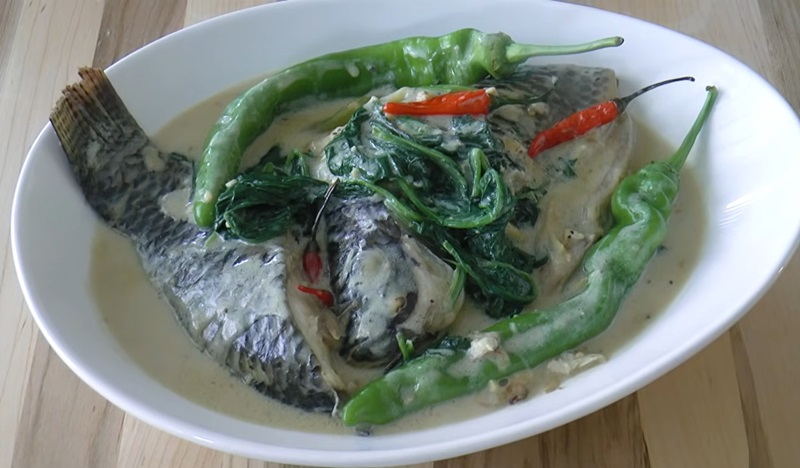
Ginataang isda, or fish in coconut milk, stands out as a cherished Filipino soup, renowned for its delightful blend of fish, coconut milk, and assorted vegetables. This creamy and flavorsome soup holds a prominent place in Philippine cuisine, celebrated for its comforting and gratifying taste. To craft ginataang isda, a variety of fish, such as tilapia or bangus (milkfish), is immersed in a rich broth composed of coconut milk, ginger, garlic, onions, and spices. The fish simmers until achieving tenderness, absorbing the delectable coconut essence. Complementing the fish, vegetables like squash, string beans, and spinach are introduced, contributing both vibrancy and nutritional value to the dish. The amalgamation of these ingredients establishes a harmonious equilibrium of flavors and textures. Typically paired with steamed rice, ginataang isda allows the rice to absorb and enhance the soup's flavors. Beyond its deliciousness, this dish prominently features coconut milk, a prevalent ingredient in numerous Filipino recipes. Whether savored on a rainy day or incorporated into a festive meal, ginataang isda remains a treasured Filipino soup, delivering warmth and comfort to the dining experience.
Maki Mi
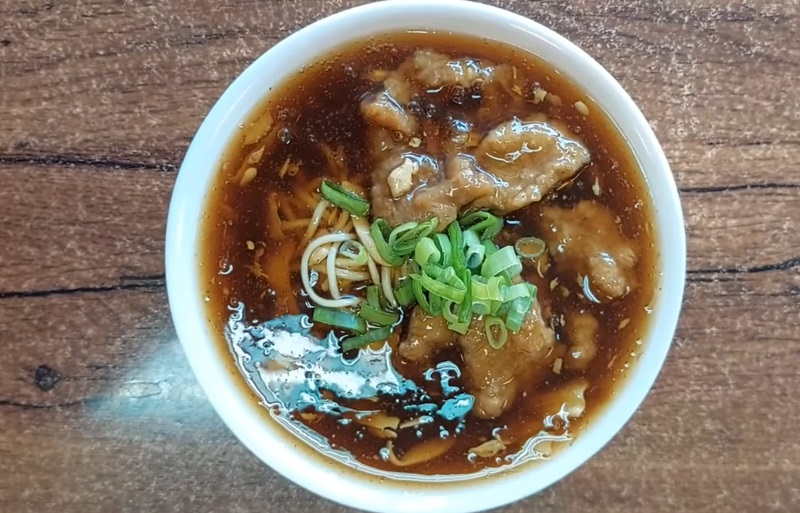
Maki mi, a beloved Filipino soup with Chinese origins, is a delightful fusion of flavorful broth, tender noodles, and an array of enticing toppings. The soup's base is a harmonious blend of chicken or pork broth, enriched with aromatic spices like garlic, onion, and soy sauce. The noodles, typically egg or wheat noodles, play a central role, perfectly cooked and absorbing the rich and savory essence of the broth. The star-studded ensemble of toppings elevates Maki mi to a culinary masterpiece. Sliced pork, chicken, or shrimp, along with vegetables such as cabbage, carrots, and mushrooms, adorn the soup. Variations may include additional elements like fried tofu or boiled eggs, contributing both protein and texture. Enjoyed piping hot, Maki mi serves as a filling and comforting meal, perfect for rainy days or when the craving for something warm and satisfying strikes. As a cherished Filipino comfort food, Maki mi embodies the heartiness and flavor complexity that makes it a go-to choice for those seeking a comforting and satisfying culinary experience.
Lauya
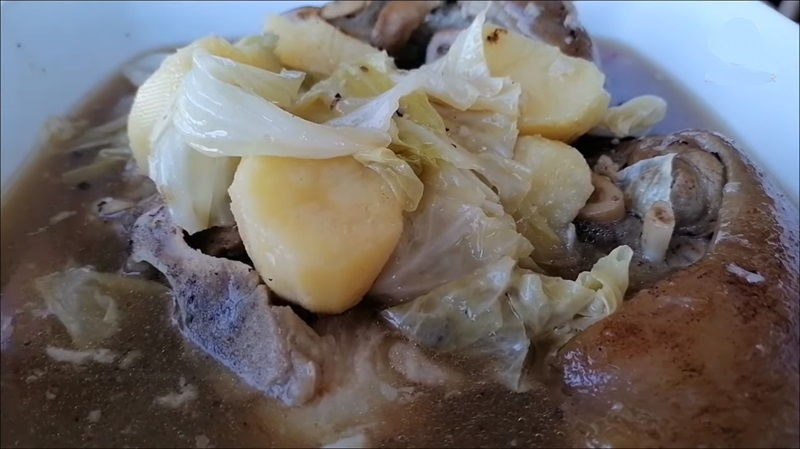
Lauya is a traditional Filipino soup and is celebrated for its robust and satisfying flavors, making it a beloved comfort food in the Philippines. At the heart of this dish is beef, particularly shank or brisket, simmered for hours until achieving tenderness and a flavorful profile. Alongside the beef, a medley of vegetables such as cabbage, carrots, and beans join the mix, providing both nutritional value and vibrant colors to the soup. To elevate the soup's taste, a blend of spices and seasonings, including garlic, onions, and peppercorns, is incorporated. Some variations introduce tamarind or batwan, a local souring agent, lending the Lauya a tangy and appetizing flavor. Served hot, Lauya is best enjoyed with a steaming cup of rice, offering comfort and satisfaction, especially on cold and rainy days. The combination of tender beef, flavorful broth, and fresh vegetables makes Lauya a delectable and wholesome soup, cherished by many Filipinos for its hearty and comforting essence.
Batchoy Tagalog
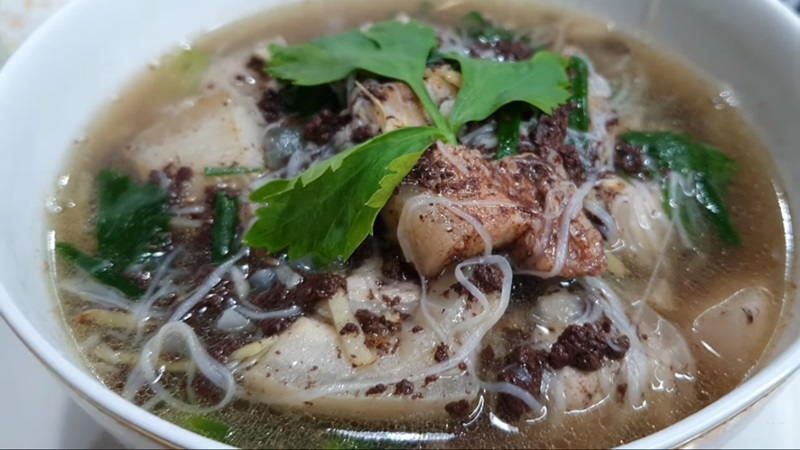
Batchoy is a traditional Filipino soup that stands as a renowned dish celebrated for its robust broth, tender meat, and an array of ingredients that collectively deliver a gratifying and comforting dining experience. The essence of Batchoy lies in its meticulously crafted pork or beef broth, slow-cooked to perfection, resulting in a soup that is both flavorful and aromatic. Complementing the broth are thin noodles, contributing a delicate texture to the dish. Generous portions of tender sliced pork, pork liver, and intestines infuse the soup with a hearty and meaty taste. The addition of crispy pork cracklings, chopped spring onions, and fried garlic further elevates the flavor profile, providing a unique twist to Batchoy.
Suam na Mais

Suam na mais, hailing from the province of Pampanga in the Philippines, is a corn soup enriched with leafy vegetables such as bitter melon, moringa, and/or Malabar spinach leaves, along with the inclusion of pork and/or shrimp. This flavorful soup is traditionally served hot, making it especially popular during the rainy season. The dish's regional roots and diverse ingredients highlight the culinary diversity found in Filipino cuisine, offering a warm and nourishing bowl that captures the essence of Filipino comfort food, perfect for comforting meals, particularly when the weather turns cold and damp.
Ginataang Labong
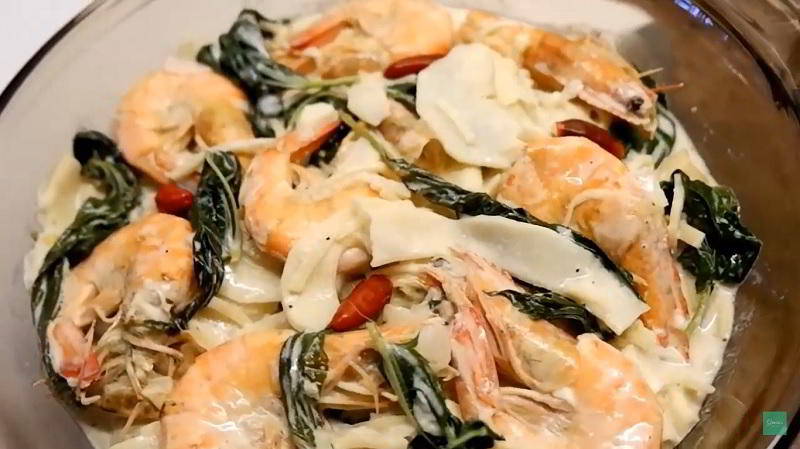
Ginataang labong, a flavorful Filipino soup, showcases bamboo shoots bathed in coconut milk to create a rich and aromatic culinary delight. The focal point of this dish is labong, or bamboo shoots, selected for their youthfulness and tenderness. These shoots are meticulously peeled, sliced into thin strips, and boiled to eliminate any lingering bitterness. In a separate pot, coconut milk is gently heated and infused with garlic, onions, shrimp or pork, and ginger, intensifying the overall flavor profile. The prepared bamboo shoots are introduced to the coconut milk mixture and simmered until achieving a delectable tenderness. For additional heartiness and nutrition, the soup may incorporate shrimp, fish, or vegetables. The final result is a luxurious and creamy concoction, where the delicate essence of bamboo shoots harmonizes seamlessly with the sweetness of coconut milk. This combination yields a comforting and gratifying dish, perfect for warding off the chill of a cold day or serving as a substantial main course in a Filipino meal.
Inubaran
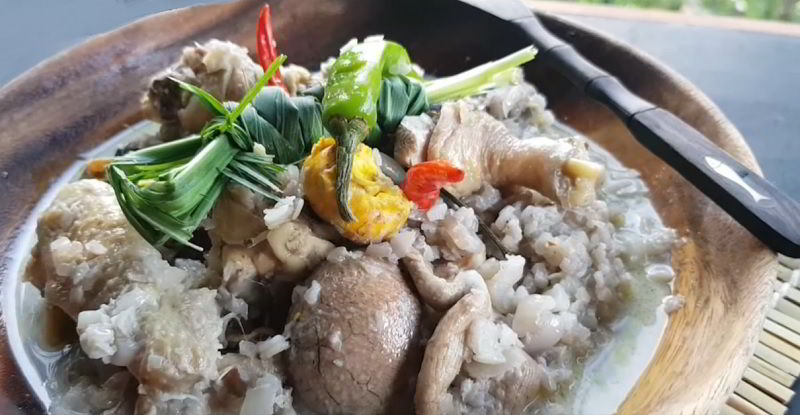
Inubaran, a Filipino chicken stew or soup, is a delightful dish prepared by simmering chicken with coconut milk (gata), or coconut cream (kakang gata), and diced banana pith, along with a blend of lemongrass and assorted spices. This savory creation also incorporates a souring agent, traditionally known as aeabihig, with choices such as batuan fruits or libas leaves. The use of these unique ingredients adds a distinctive tang to the dish, contributing to its rich and complex flavor profile. Inubaran stands as a testament to the diverse and inventive nature of Filipino cuisine, bringing together regional flavors and traditional cooking techniques to create a comforting and satisfying chicken stew or soup with a touch of tropical sophistication.
Sinanglay
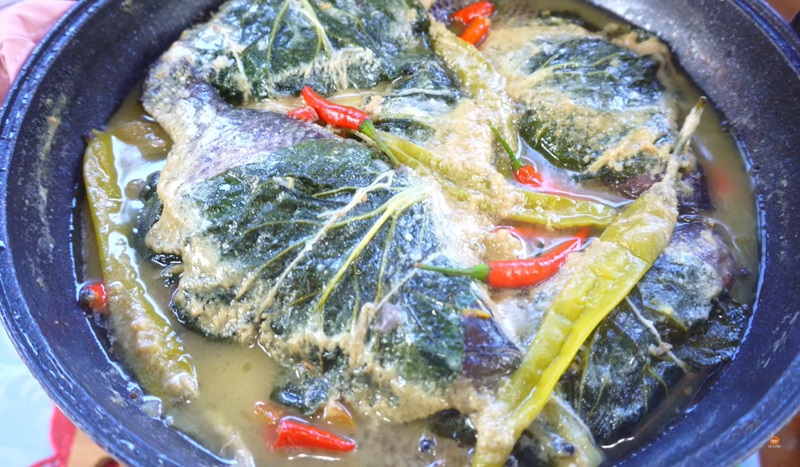
Sinanglay, a traditional Filipino soup hailing from the Bicol region, reflects the region's rich seafood offerings and the incorporation of coconut milk. Tilapia fish serves as the primary ingredient, though alternatives like hito (walking catfish) or hasa-hasa (short mackerel) may be used. The fish undergoes stuffing with a fragrant blend of tomatoes, onions, ginger, and garlic, infusing it with aromatic complexity. Simmering the stuffed fish in a luscious broth, created from coconut milk, annatto seeds, and an array of spices, yields a creamy and subtly spicy soup with coconut milk's inherent sweetness. Sinanglay's distinctive taste emerges from the interplay of fish, vegetables, and spices, resulting in a harmonious and gratifying experience.
Pancit Buko
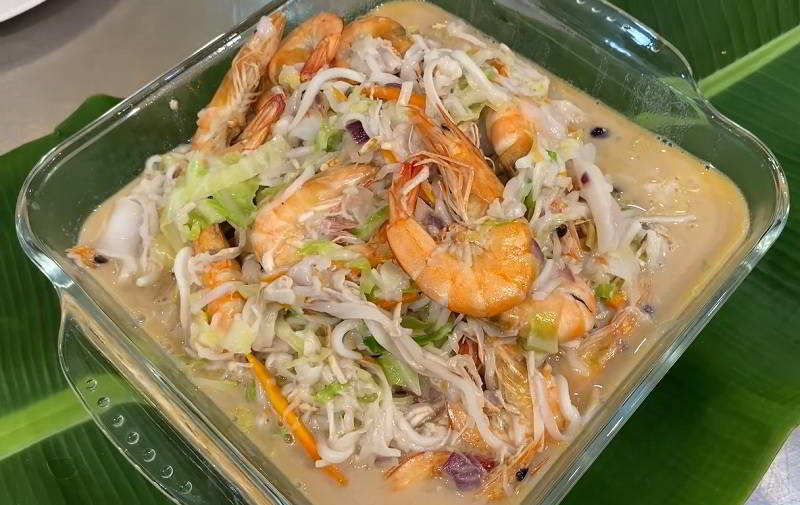
Pancit buko, translating to "young coconut noodles" in Tagalog, is a Filipino culinary creation featuring meat or seafood, ultra-thin strips of young coconut meat, combined with an array of spices, and vegetables. The dish presents a harmonious blend of flavors and textures, showcasing the creativity inherent in Filipino cuisine. With its unique incorporation of young coconut, Pancit buko stands as a delicious testament to the diverse and innovative nature of Filipino culinary traditions, offering a delightful alternative to traditional noodle-based dishes.
Ginataang Hipon

Ginataang hipon is a cherished classic in Filipino cuisine, celebrated for its luxurious and creamy character. It stands out as a simpler form of ginataan. The fundamental recipe comprises unshelled shrimp with intact heads, onion, ginger/turmeric, coconut milk, patis (fish sauce) or bagoong alamang (shrimp paste), garlic, and salt and pepper to taste, occasionally spiced with peppers. In the cooking process, onions and garlic are fried in oil, followed by the addition of shrimp and subsequent incorporation of the remaining ingredients until fully cooked. Some variations involve boiling coconut milk until it reduces and turns oily, while others maintain a soupy consistency. If available, coconut cream is preferred over thin coconut milk. Traditionally, the dish omits vegetables, but some versions introduce leafy greens, bamboo shoots (labong), tomatoes, and/or cucumber for added depth of flavor and texture.
Linat-an
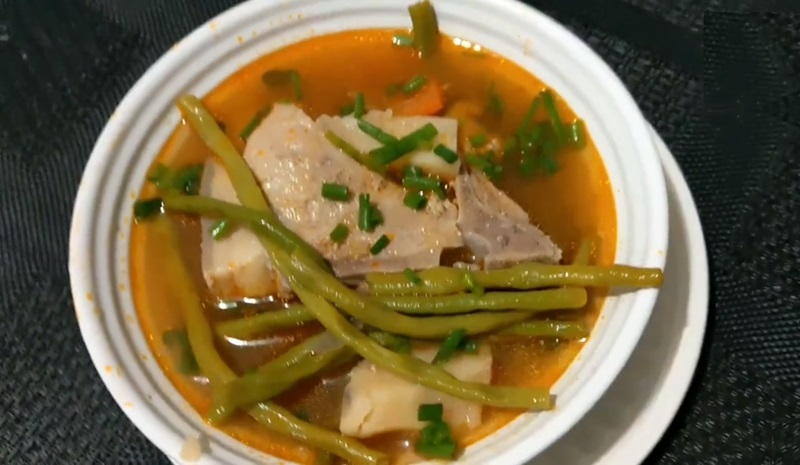
Linat-an is a traditional Filipino dish, often considered a comfort food, that is a clear and simple soup made with pork, vegetables, and tubers. The dish typically includes pork belly or ribs, green papaya slices, sweet potato, taro, string beans, and malunggay (moringa) leaves. It is seasoned with ginger, onions, and fish sauce or salt to enhance the flavor. The preparation involves boiling the pork with the vegetables until everything is tender, creating a savory broth. Linat-an is known for its clear and refreshing broth, and it is commonly enjoyed with rice. The combination of different textures and flavors from the various ingredients makes it a wholesome and satisfying soup, often prepared in Filipino households, especially during colder weather or when a nourishing and simple dish is desired.
Ginataang Ampalaya
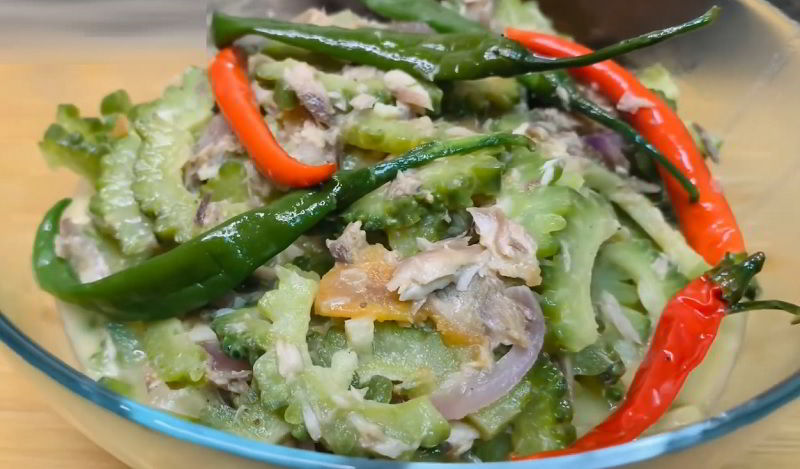
Ginataang ampalaya, or bitter gourd in coconut milk, stands as a timeless Filipino soup that skillfully melds the distinctive essence of bitter gourd with the creaminess of coconut milk. Esteemed in the Philippines, especially among those with an appreciation for the unique taste of ampalaya, this dish undergoes a thoughtful preparation process. The bitter gourd is initially sliced and soaked in salted water to temper its bitterness. It is then artfully cooked with onions, garlic, ginger, and a choice of shrimp or meat, tailoring the dish to individual preferences. The introduction of coconut milk imparts a luscious, creamy texture to the soup. Additional enhancements such as chili peppers, fish sauce, and shrimp paste elevate the flavors. Ginataang ampalaya not only tantalizes the taste buds but also boasts health benefits. Bitter gourd is recognized for its medicinal properties, offering a nutritious choice that is believed to regulate blood sugar levels and enhance digestion. This flavorful soup, often paired with steamed rice, presents a gratifying and comforting meal. Whether one is an aficionado of bitter gourd or an adventurous palate seeking something new, ginataang ampalaya beckons as a must-try Filipino dish, delivering a delightful fusion of flavors.
Talunan
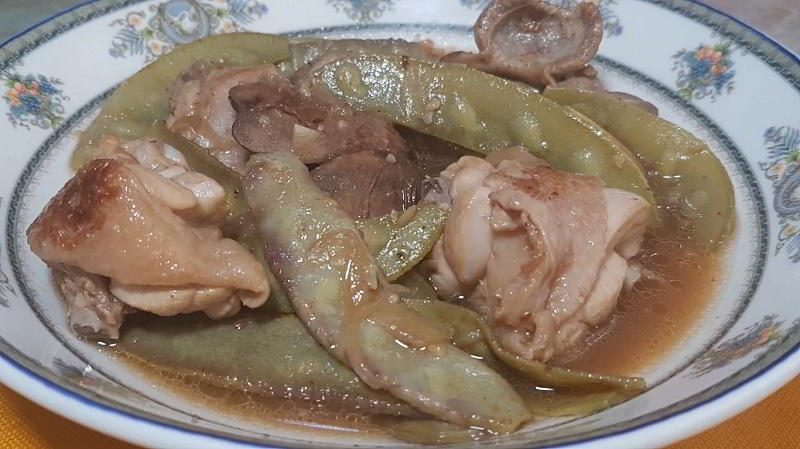
Talunan, also known as talonan, is a Filipino chicken soup or stew celebrated for its distinctive sour taste. Its preparation mirrors a blend of Philippine adobo and paksiw, incorporating ingredients such as bay leaves, vinegar, black peppercorns, garlic, patis (fish sauce), ginger, and salt. Some variations include the addition of pork to enhance the dish. Intriguingly, the name "talunan" translates to "loser" in Tagalog, reflecting its historical origin. Traditionally, talunan was crafted from the robust meat of defeated roosters used in cockfighting, transforming what might be considered tough meat into a flavorful and comforting dish. This unique culinary creation captures the ingenuity in Filipino cooking, turning humble ingredients into a savory testament to resourcefulness and culinary innovation.
Kadyos, Manok, Kag Ubad
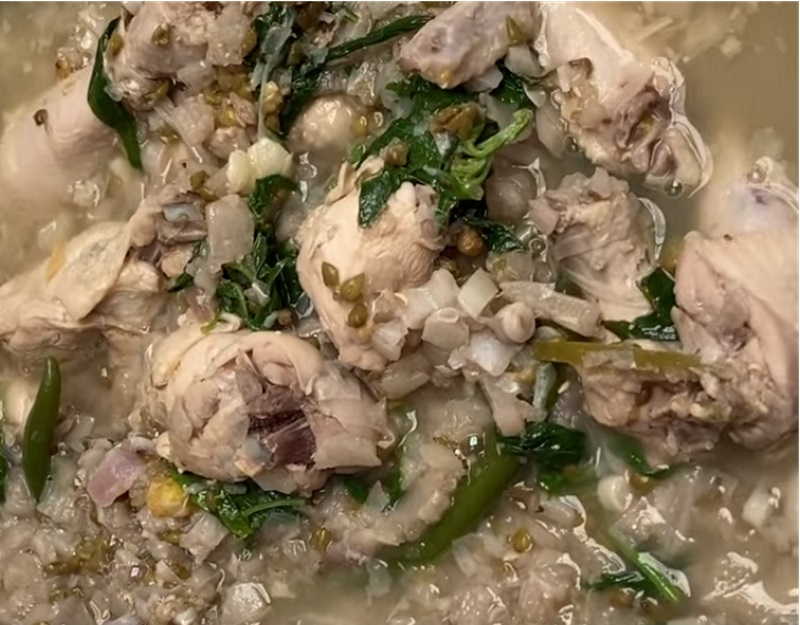
Kadyos, manok, kag ubad, a traditional soup hailing from the Philippines, presents a robust blend of three key ingredients - kadyos (pigeon peas), manok (chicken), and ubad (banana pith). The heartiness of this soup unfolds as the kadyos is tenderly boiled, imparting an earthy nuance that defines its flavor. The addition of chicken, along with aromatic elements like onions, garlic, and ginger, enriches the broth with a savory depth. What distinguishes this soup is the incorporation of ubad, thinly sliced banana pith, introducing a unique texture and subtle sweetness to the concoction. The delicate flavor of ubad harmoniously complements the other components. Served hot and accompanied by steamed rice, Kadyos, manok, kag ubad emerges as a comforting and nourishing dish, highlighting the diverse and delightful flavors of the Philippines. Whether relished on a chilly evening or reserved for a special occasion, this soup captivates the palate, standing as a delectable testament to the richness of Filipino culinary traditions.
Sopang Mais

Corn crab soup is a delightful and flavorful dish that seamlessly blends the sweetness of corn with the rich, savory essence of crab. This comforting soup typically features tender crab meat, sweet corn kernels, and a medley of vegetables like onions, celery, and carrots, all harmoniously simmered in a fragrant broth. The addition of minced garlic and grated ginger imparts aromatic depth, while soy sauce contributes a savory umami note. A touch of cornstarch may be used for thickening, and beaten eggs are gently incorporated to create silky ribbons within the soup. Garnished with fresh green onions and, optionally, a drizzle of sesame oil, this soup offers a symphony of textures and flavors, making it a warm and satisfying culinary experience that captures the essence of both land and sea.




